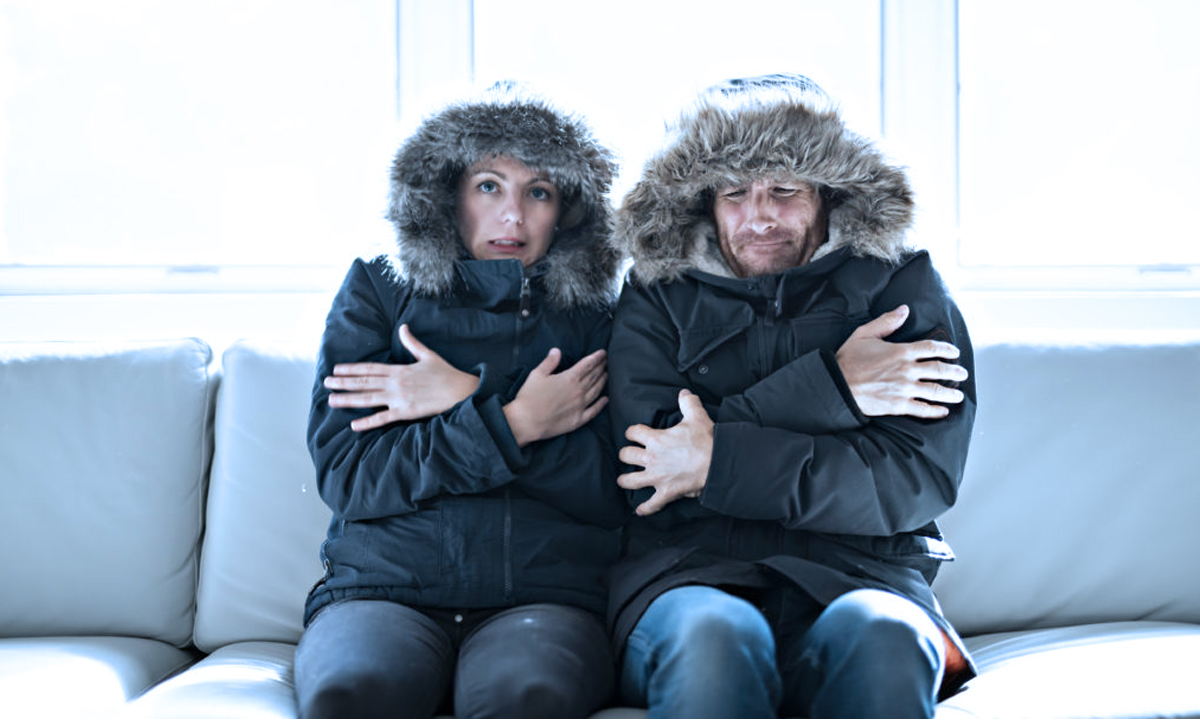Stay Warm In Winter Hacks
Winter weather can easily catch people unprepared. Here are a few tips for survival and safety.
WINTER WEATHER EVENTS ARE NO JOKE
Being 100% prepared for winter can be difficult. Why? Because, we make preparations based on what we expect from the weather where we live. We anticipate what is “normal”. But, sometimes winter weather patterns are more extreme and catch us off guard.
For example, in February 2021, an extremely severe winter weather event dove down through several states all the way down to the Gulf of Mexico located at the bottom of Texas.
For days, Austin, Texas saw temperatures colder than Anchorage, Alaska. People and systems weren’t prepared for that type of winter. Power was out for days in huge areas and affected hundreds of thousands. All electric homes were dark and cold. People were freezing. Many roofs collapsed in areas that weren’t built to support snow loads. Municipalities did not have the equipment and procedures to keep the roads clear locking people in and keeping emergency response locked out. Propane suppliers were backlogged and could not make deliveries in some areas. It was a bitterly miserable time. Sadly, several people perished as a result.
And then, in January 2021, even the far southern tip of Florida had temperatures down to 30 degrees overnight. Although it did not last as long and therefore not as catastrophic, we’re pretty confident most Miami vacationers and residents weren’t prepared.
Another factor is human response. Often people start by thinking they can “tough” it out. They laugh it off and don’t take much action. Then at some point, they realize the situation may be more dire than they realized. This can result in mini-panics and doing some pretty stupid stuff.
So here we’d like to give you a few stay safe, stay warm hacks.
THINK LIKE A FRONTIERSMAN :
If you knew you were going to have to live without modern conveniences, you would plan for it and think logically about it. When severe winter cold hits, take on the mindset of expecting to manage your environment. Don’t panic. Don’t be hasty. Think things through, because if they go wrong it could be bad! Think outside the box.
Pretend you are camping and start thinking like a camper. Raid your camping equipment. You may have a lot of useful tools.
BLOCK WIND :
Wind hitting the side of a building, a car, or you, will lower the object’s temperature. Wear wind-breaker clothing. Park vehicles behind walls to break the wind.
Add temporary barriers to the outside of building walls to buffer the windchill and potentially create an insulating effect. Options vary, but might include: plywood or lumber, hay bales, tarps, or trailers. If the wall faces the sun, remove during the day to obtain solar heat.
DON’T BE DRAFTY :
Use candles to look for unrecognized drafts by watching the flame. There may be drafts that went unknown while central air and heat systems are functioning.
If you find drafts around doors, use a rolled up towel at the bottom of a door. Use painter’s tape to seal around door edges by taping the door to the trim. Painter’s tape is designed to stick without damaging the wall. If other tape is used, repair may be needed later. Check air vents. If they are not functioning, you can close or even cover them to keep air within a room. Inspect double hung windows to make sure the upper half has not slipped down allowing air flow.
INSULATE EVERYTHING :
Wear clothing layers with moisture wicking t-shirts and shorts next to your skin.
Think of ways to insulate the area around you. Adding bubble wrap over poorly insulated windows increases the R-value and creates an insulation barrier.
Cover an exterior door that won’t be used much with a blanket. Nails applied to the top face of the door trim can be removed later and holes won’t be visible if placed in a discreet location. Add big safety pins to a blanket and hang it over the nails. Place blankets over cold wood, tile or linoleum floors.
MANAGE YOUR SPACE – LESS IS MORE :
Smaller spaces are easier to retain heat. Close off unnecessary rooms. “Move” into one room and only use the rest if necessary. Improvise or upgrade a canopy bed with thicker draping to hold body heat within the space.
Pitch a tent in the living room. Cover it with blankets. Make a tent from furniture and blankets. The smaller space will retain body heat. Use a sleeping bag, but be aware sleeping bags are made for different temperature levels. Don’t assume your sleeping bag is rated for freezing temps.
Keep exterior doors closed as much as possible. Create a buffer for going in and out by hanging a heavy blanket over the door. Stand between the blanket and the door before opening or closing the door. This prevents the rapid transfer of air and temperature. Bring outside stuff inside so there is no need to go out. This may not work for everything, but the goal is to reduce the number of trips in and out.
Move your bed or make sleeping pallets of blankets away from windows and away from exterior walls. Use air mattresses with caution. Cold temperatures can cause mattress deflation and uncomfortable sleep. Air mattresses should also have significant bedding and padding between the sleeper and the mattress. The air conducts heat away from a body.
SLEEP :
Sleep with other people and pets to share body heat. This may be especially important to prevent hypothermia in children that are left alone in their own bed. It can happen quickly and checking on them every couple of hours may not be adequate. Take special care with very small children and infants when sleeping with larger children or adults to make sure they are safe from oxygen depletion and compression. Take extra precautions with small toddlers and infants to prevent hazardous sleeping situations.
Get extra sleep. Staying warm and maintaining body temperatures during extreme cold drains food energy and is tiring. Replenish as needed.
EAT & DRINK :
Fatty food is your friend. Fat provides energy to keep you temperature up. Avoid alcohol, because the depressant effects will lower body temp. Avoid caffeine at night as it may increase your bathroom visits.
Your bed cools off every time you get out. You lose body heat every time you take clothes off. Manage trips to the bathroom by not drinking liquids less than an hour prior to bedtime or anytime you need to stay covered up. That said, keep water bottles and snacks at your bedside so uncovering is not always necessary.
CLOTHING :
Get resourceful with clothing. Wear layers of socks as mittens. Wear pantyhose under pants, wear flannel lounge pants on top of jeans. Wear lawn trash bag “ponchos” to stay dry and warmer. Wear sweat suits 24/7.
The fewer times you change clothes, the fewer times you lose body temp. If you do change clothes, get under bed covers to undress and redress. The activity will increase the heat retained under the blanket. This is especially helpful if you are getting ready to sleep. Get under covers with small children to help them change their clothes and have fun, too.
Make sure all clothing is staying dry, particularly from sweat which can chill and freeze. Sweaty socks from boots can cause serious problems.
SOURCES OF HEAT :
When there is a power outage, we have to think a little harder to create heat.
If your home has natural gas or propane, you may be able to use the oven to provide heat. If not, consider camping equipment like butane camp stoves. Other options include: sterno cans, (non-electric) fondue pots, or homemade terracotta heaters made from pots and candles. Large candles can add vital heat. Foil “walls” behind or around a heat source helps to reflect and direct the heat.
Be very careful, even under dire cold temperatures, with burning anything inside and all open flames. Ventilation may not be adequate to be safe. Smoke may not have any way to escape. Chemicals may be created like carbon monoxide or charcoal additives. Fire is always a risk as is surface damage to floors or furniture from hot containers.
If you are using a portable generator to run space heaters, be extremely cautious to locate the generator outside, several feet from any building and with good ventilation. Read the manufacturer’s use and safety directions. Be sure to use adequately rated and heavy extension cords.
Take extra steps to keep children and pets safe from hot surfaces. Use baby gates as a barrier. Place broomsticks on the floor and anchored between objects to keep babies in walkers at a safe distance. Don’t place fabrics, even beds, and paper near heat sources.
Use the chemical hand warmers packed in with your camping supplies. Heat water over a flame for a hot water bottle to place between your thighs and heat main arteries. Or, put hot water in a well-sealed, heavy plastic or non-insulated container to heat the foot of a bed.
CARBON MONOXIDE :
If you’re not sure about the age of the batteries in your carbon monoxide detector, change them if you have any new ones at home. Be extra mindful to prevent carbon monoxide illness or death which could result from using unconventional heating methods. Besides with everything else going on, it’s one less thing to stress over.
These tips are for survival in extreme cold and freezing conditions. It is your responsibility to assess your environment, make wise decisions and take all possible precautions to prevent harm to yourself, to others, or to your property. Proceed with due caution.
Stay calm. Don’t panic. Use common sense.
Standby Home Generators
Power You Can Count On!
A Home Standby Generator system provides whole house power within seconds of a power failure.
Our site explains it all: wheelergenerators.com or contact us at 1-800-WHEELER for more information.




